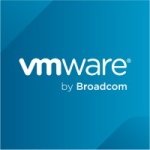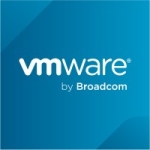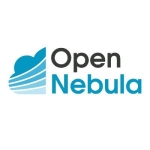What is our primary use case?
It is to manage all my clusters. I have nine nodes, splitting six nodes on one side and three nodes on the another side. Prism Pro is the center to manage the whole cluster.
We have a nine node clusters. All machines are NXs from Nutanix. Our environment runs new development tools, like GitLab. DevOps are running inside of Nutanix and a few other systems. We are using Nutanix for new stuff to implement and test new technologies, such as DevOps, Kubernetes, Dockers, and Hadoop (in a few of the clusters for big data).
I am using the latest version.
How has it helped my organization?
Prism Pro can do everything that I need to manage my machines. I can manage my storage, priorities, and higher operations.
What is most valuable?
- The update for all clusters
- The Kubernetes solution for Nutanix
- Calm is a good tool for deploying critical blueprints.
All these tools are managed by Prism Pro. With Prism Pro, you have the scripting tool where all functions are available through the interface and 1-click centralized upgrades. Though, you can do the same things by programming.
The tool's management for clusters is amazing and simple. It's quite simple to use it daily. With 1-click centralized upgrades, I can update my entire cluster using the data tech software from a single point in an easy way. It shows me that I have an update, then I just apply it, wait a few minutes, and all of the clusters are updated. It doesn't matter if it's a software update or something like bills. Everything is done from one central point. Also, the dashboard are really good. We have some relevant formations where I can see my cluster's CPU age, memory age, virtual machines, etc. All information can be viewed in an easy way, which provides me a cloud-like experience on an on-prem solution.
The dashboards also let me see the efficiency of my virtual machines, e.g., I can set it for a reminder to show me if there are any machines that are overprovisioned or constrained, then I can adjust the machines. In addition, I can create new virtual machines on any clusters from a single point of access. It's a pretty cool tool.
The interface is nice and simple. When the guys did the implementation, they told me, "They will walk me through on the solution and explain most of the important configuration tools." After that, I learned Prism Pro by myself. I never did a training or anything else. When the techs provide a new update, I take a look and see what's new. Sometimes I watch YouTube video from Nutanix with the new features, but it is really simple.
What needs improvement?
For now, my biggest problem in our corporation is the Nutanix hypervisor (AOS) is not fully operational for some things. We are only allowed to use VMware, but I use AOS. I think the Prism Center needs to include more functions. I know that they're including Nutanix Era, which is the database management and disaster recovery tools. I think that Era should include everything on a single tool where you can manage everything you need inside your organization.
It could maybe have better documentation. Nutanix does have really good documentation, but it could have more details in the future.
For how long have I used the solution?
What do I think about the stability of the solution?
It's really stable. In two years, I never have had a problem with Prism Pro.
I do the maintenance.
What do I think about the scalability of the solution?
It can grow with my environment. With Prism Pro, it manages your entire Nutanix cluster. If I add more clusters onto that, I can manage it from the Prism Center, I just need to redistribute the cluster, then I can manage it like it's one machine. It doesn't matter if I have two or 100 clusters, I can manage it from a single point, which is good. This saves me time because if I need to update (for example), I can update a lot of machines from 1-click. Then, it will go on each machine of the clusters and update them. I am saving at least 40 percent of my time managing multiple clusters from a single point.
I am using the solution’s machine learning algorithms for things like predictive capacity planning or other functions but I already sp;have good capacity inside of my cluster. I think if I create new machines, it is really good but I am not using it so much. I have enough capacity at the moment. For the tools on Prism, I'm not planning to create so many machines. However, I already do use the tool and the predictions are really amazing. It is really helpful for planning in advance (e.g., six months, one year, or two years) the capacity for the cluster. I can estimate what will be the capacity of my cluster. For example, if I am a planning for one year to create 20 machines with a specific size, the machine learning algorithms can show me if I have enough capacity on the cluster to do that or if I need to expand the cluster.
Between my colleagues from the operations team and me, there are around six people using it. I'm the owner of the contract for this company as the infrastructure architect. The other five guys are Linux and Windows administrators.
How are customer service and technical support?
The support quality for Nutanix is unbelievable. The normal way support works from some other vendors: If I open a web ticket, then I need to wait three to four hours for a first contact from the company. Normally, this contact will ask me, "What is my problem," and try to direct me to the right person, then need to wait more. A few times, an engineer talked with me and acted on the solution. However, with Nutanix, I open a ticket, and in five minutes, I am talking with an engineer who can solve my problem.
It is a really good experience to call Nutanix support via the phone. E.g., I explained a problem that I was having, and they told me, "I don't know so much about this problem, but my colleague at my side does know it. Just a minute." They transferred the call to the guy, whom I talked to and he help me. When they are going to end the call, they only ask for my serial number of my cluster to open a ticket. This is just to register the case. Before this, I had never seen a company where you call, get the support, and after that, they create a ticket for you. Normally, with companies, you need to call to a call center who registers the calls, then sends them to the engineer. When you call to Nutanix, you talk with the engineer.
Which solution did I use previously and why did I switch?
We are still using VMware vCenter for virtualization management. Unfortunately, many systems are managed by my colleagues from Germany, and we're located in Brazil.
We brought on Nutanix because we were looking to improve our environment and boost its speed. We were also looking for a new solution/tool. We trust Nutanix, and especially like the cloud-like solution for on-prem. We have been happy with them.
How was the initial setup?
It was really simple for me. When I purchased the hardware, I also asked for an implementation. I followed the implementation with the guys. It was one to two days. When we deployed the machines we needed to do some updates, after that the configuration was quite simple and fast.
For deployment, we needed to install the hardware, do the start up, connect all the cables, and build the network, then install the Prism Pro and all the software. This took two days for us to unpack and put in the rack.
Our implementation strategy was to install the rack and configure the system, then when it was up and running, deploy the machines. It all worked and was really amazing.
What about the implementation team?
Two guys from the vendor did the installation. I used a third-party integrator, Servex (a Brazilian reseller/partner of Nutanix), to implement Prism Pro for me because because they have some configurations hided in Nutanix. They configure every piece of the driver, etc. I preferred that a third-party company do the implementation for me and I just follow up on all the activities.
Our experience with Servex was really good. Those guys really know the product and tools. The implementation went well.
We needed to install the hardware in two data centers. We installed in one location, then went to another location for install. However, this was a fast implementation.
What was our ROI?
I haven't fully recovered my investment.
What's my experience with pricing, setup cost, and licensing?
If you compare a three layer solution, server, cell network, and storage to Nutanix, the prices are quite similar. However, if you take a look at the whole environment including the management, Nutanix has a better cost when compared with other solutions, especially because it's hardware.
Nutanix has good central management tools where one guy can manage the entire system. Looking at other systems, I need a guy to manage the servers and another guy to manage the cell network and storage. I need a bigger team for other solutions compared to Nutanix where I can use a small team and reduce my operations to manage the cluster. Sometimes what you hear with this solution is, "It is so expensive," but the cost and benefits that Nutanix has inside are really good.
Which other solutions did I evaluate?
When I purchased the cluster, I could use the Nutanix hardware or purchase Dell EMC hardware using Nutanix software. However, when I purchased Dell EMC hardware in the past, if I needed some support, first I would need to call to Dell EMC and they would need to see if it's a hardware or software problem. If it's a software, then the issue is for Nutanix to resolve. This is the reason that when I purchased the solution, I purchased the hardware from Nutanix. I wanted to have the full support experience from Nutanix. I have been really happy with them.
I did a small evaluation of HPE SimpliVity and Dell EMC VxBlock, but I did not like these two tools. I preferred Nutanix because the scalability is better than the other two solution. It also has a better hardware solution that is simpler to use.
While I know that VMware has some hyperconversion tools like Nutanix, the problem is the licensing cost for VMware. For a hyperconversion system, Nutanix has a better solution than VMware, especially if you take a look at the costs.
What other advice do I have?
I only use the Calm automation feature where I can create machines, but only inside my clusters. Its codeless approach to automation is amazing and good. It does some automated tasks on drag and drops. It also provides you the power to adjust scripts and the code so you can do more than the basics. Specifically in Calm, admins can confidently set up automation rules. In the Prism Pro, we have the CLI tool where you can deploy a machine and administration cluster over command line. Basically, you can create your automations on your own without using a DB. This provides us with a single tool for monitoring automation.
I would rate this solution as a 10 (out of 10). I really love this solution. It is excellent.
Which deployment model are you using for this solution?
On-premises
Disclosure: PeerSpot contacted the reviewer to collect the review and to validate authenticity. The reviewer was referred by the vendor, but the review is not subject to editing or approval by the vendor.
















